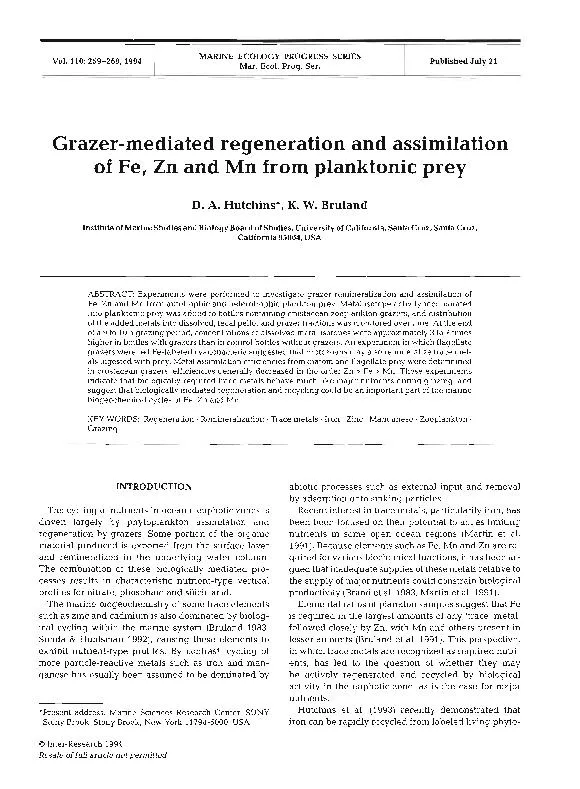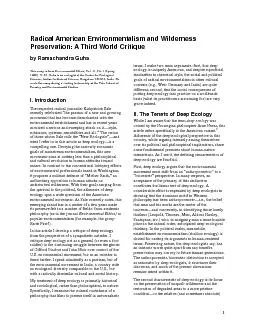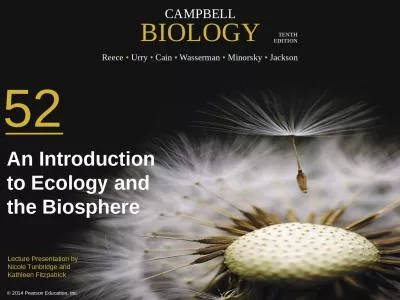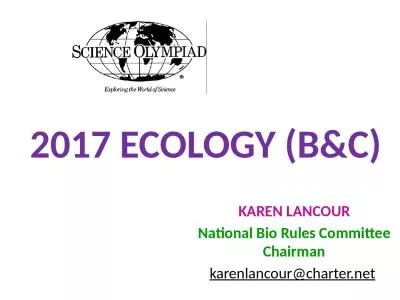PDF-ECOLOGY PROGRESS
Author : debby-jeon | Published Date : 2016-06-10
planktonic prey prey densities replicate bottle as prey as prey shrimp Arfemia Flagellate Paraphysomonas Diatom Thalassiosira weissflogii Flagellate Paraphysomonas
Presentation Embed Code
Download Presentation
Download Presentation The PPT/PDF document "ECOLOGY PROGRESS" is the property of its rightful owner. Permission is granted to download and print the materials on this website for personal, non-commercial use only, and to display it on your personal computer provided you do not modify the materials and that you retain all copyright notices contained in the materials. By downloading content from our website, you accept the terms of this agreement.
ECOLOGY PROGRESS: Transcript
Download Rules Of Document
"ECOLOGY PROGRESS"The content belongs to its owner. You may download and print it for personal use, without modification, and keep all copyright notices. By downloading, you agree to these terms.
Related Documents














